
JOURNAL OF FLUORESCENCE
Scope & Guideline
Bridging Disciplines Through Fluorescence Methodology
Introduction
Aims and Scopes
- Fluorescent Probes and Sensors:
The journal extensively covers the development and application of fluorescent probes and sensors for detecting various analytes, including metal ions, small molecules, and biomolecules. These probes are designed for high sensitivity and selectivity, often incorporating advanced mechanisms such as aggregation-induced emission (AIE) and Förster resonance energy transfer (FRET). - Nanomaterials and Quantum Dots:
A significant focus is placed on nanomaterials, especially carbon quantum dots and metal-organic frameworks (MOFs), which are utilized for their unique optical properties in sensing and imaging applications. The journal highlights innovative synthesis methods and their implications for enhancing fluorescence properties. - Theoretical and Computational Studies:
The journal incorporates theoretical investigations, including density functional theory (DFT) studies, to understand the photophysical properties of fluorescent materials and their interactions. This theoretical framework supports the experimental findings, providing deeper insights into the mechanisms behind fluorescence. - Biological and Environmental Applications:
Research exploring the application of fluorescence techniques in biological systems, such as imaging and sensing in living cells, as well as environmental monitoring and pollution detection, is a core area. The journal aims to bridge the gap between fundamental fluorescence research and real-world applications.
Trending and Emerging
- Sustainable and Green Chemistry:
There is a growing emphasis on environmentally friendly synthesis methods for fluorescent materials, such as carbon dots derived from natural sources. This trend aligns with global sustainability goals and the demand for greener alternatives in chemical research. - Smartphone-Based Fluorescence Sensing:
The integration of fluorescence sensing with smartphone technology is emerging as a significant trend. This approach allows for portable and user-friendly detection methods, making fluorescence applications more accessible in various fields, including healthcare and environmental monitoring. - Multi-Modal and Ratiometric Sensing:
Research is increasingly focused on developing multi-modal and ratiometric sensors that can detect multiple analytes simultaneously. This trend reflects the need for more comprehensive and efficient analytical tools in fields like clinical diagnostics and environmental studies. - Advanced Photophysical Studies:
The application of advanced photophysical techniques, including time-resolved and transient fluorescence measurements, is on the rise. These studies provide deeper insights into the mechanisms of fluorescence and the behavior of fluorescent materials in complex environments.
Declining or Waning
- Traditional Organic Dyes:
Research on traditional organic fluorescent dyes has decreased as newer materials such as carbon quantum dots and MOFs gain prominence. This shift is likely due to the superior performance, stability, and multifunctionality of these newer fluorescent materials. - Conventional Fluorescence Techniques:
There is a noticeable decline in the publication of studies focusing solely on conventional fluorescence techniques without novel developments or applications. As the field evolves, there is a stronger emphasis on integrating fluorescence with innovative technologies such as nanotechnology and advanced computational methods. - Static Fluorescence Measurements:
Research relying solely on static fluorescence measurements is becoming less prevalent. The trend is moving towards dynamic and time-resolved fluorescence studies, reflecting a broader interest in understanding complex interactions and behaviors of fluorescent systems under varying conditions.
Similar Journals
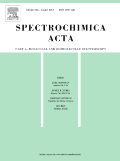
SPECTROCHIMICA ACTA PART A-MOLECULAR AND BIOMOLECULAR SPECTROSCOPY
Empowering researchers with cutting-edge spectroscopic insights.SPECTROCHIMICA ACTA PART A-MOLECULAR AND BIOMOLECULAR SPECTROSCOPY, published by PERGAMON-ELSEVIER SCIENCE LTD, stands as a pivotal resource in the fields of molecular and biomolecular spectroscopy, providing a platform for researchers to disseminate significant findings from both analytical chemistry and molecular physics. With an impactful presence reflected in its Q2 rankings across several categories, including Analytical Chemistry and Spectroscopy, this journal aims to foster advancements in the understanding of molecular interactions through innovative spectroscopic techniques and methodologies. Despite not providing open access, its authoritative articles are crucial for professionals seeking to stay at the forefront of research and development in the discipline. The journal also showcases an impressive pedigree, ranked in the top tiers of Scopus indicators, including high percentiles in both Chemistry and Physics domains. With coverage expanding from 1995 to 2025, SPECTROCHIMICA ACTA PART A remains an essential reading for anyone dedicated to the evolution of spectroscopic science.
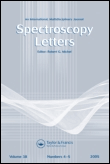
SPECTROSCOPY LETTERS
Pioneering Insights in Optics and Molecular StudiesSPECTROSCOPY LETTERS, published by Taylor & Francis Inc, is a pivotal journal that plays a significant role in the fields of Analytical Chemistry, Atomic and Molecular Physics, and Optics. With an ISSN of 0038-7010 and E-ISSN of 1532-2289, it provides a platform for the dissemination of cutting-edge research and developments in spectroscopy and its wide-ranging applications. As of 2023, the journal is ranked in the third quartile (Q3) across its relevant categories, reflecting its importance in these scientific domains. The journal has a continuous publication history from 1968 to 2024, establishing a rich legacy in academic literature. Although it currently does not offer Open Access options, SPECTROSCOPY LETTERS remains a valuable resource for researchers, professionals, and students seeking to advance their knowledge and applications in spectroscopy. For those in the arena of physics and chemistry, this journal is essential for keeping abreast of the latest findings and methodologies in the field.

Journal of Ovonic Research
Fostering Interdisciplinary Insights in Ovonic Research.Journal of Ovonic Research is a distinguished publication dedicated to advancing the fields of electronic, optical, and magnetic materials. Published by VIRTUAL CO PHYSICS SRL, this journal offers a platform for researchers to share innovative findings and developments that push the boundaries of technology and materials science. With an ISSN of 1842-2403 and an E-ISSN of 1584-9953, it provides an important service to the academic community, particularly within Romania and beyond. Despite its recent inception in 2011, the journal has gained traction in the academic landscape, reflecting a Q4 quartile ranking in crucial categories such as Electronic, Optical and Magnetic Materials, as well as in Physics and Astronomy. The Scopus rankings further underscore its positioning, ranking within the 25th to 37th percentile across various disciplines, making it a valuable resource for professionals and students alike. Although the journal currently operates on a non-open access basis, it remains committed to exploring the latest advancements in materials science, encouraging interdisciplinary collaboration and fostering a deeper understanding of surface, coating, and film technologies. As the field evolves, Journal of Ovonic Research stands as a beacon for scholarly communication, bridging the gap between research and practical application.
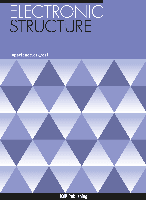
Electronic Structure
Connecting Researchers with Cutting-edge FindingsElectronic Structure is a pivotal journal in the field of condensed matter physics, published by IOP Publishing Ltd, a prominent name in the dissemination of scientific literature. Since its inception in 2019, the journal has rapidly gained recognition, currently holding a commendable Q1 ranking in Condensed Matter Physics, alongside respectable Q2 rankings in Electrical and Electronic Engineering, Electrochemistry, Electronic, Optical and Magnetic Materials, and Materials Chemistry as of 2023. With a strong emphasis on original research, reviews, and innovative methodologies, Electronic Structure serves as a vital platform for researchers, professionals, and students alike, enabling access to high-impact findings in diverse areas of study relevant to electronic structure and properties of materials. The journal ensures wide dissemination of knowledge in the engineering and physical sciences communities, making it an essential resource for anyone looking to stay at the forefront of advancements in these dynamic fields.

CHINESE JOURNAL OF ORGANIC CHEMISTRY
Connecting Ideas and Innovations in Organic ChemistryThe Chinese Journal of Organic Chemistry, published by Science Press, serves as a pivotal platform for advancing the field of organic chemistry since its inception in 1996. With an ISSN of 0253-2786, this esteemed journal provides robust scientific contributions, reflecting significant advancements and novel findings that are crucial to the organic chemistry community. As of 2023, it is categorized in the Q3 quartile of organic chemistry journals, positioning it within the competitive landscape of this vibrant research area, ranking #147 out of 211 in Scopus, corresponding to a 30th percentile ranking. The journal is committed to fostering a scholarly exchange of ideas and research, making it an essential resource for researchers, professionals, and students dedicated to exploring the complexities and applications of organic compounds. The Chinese Journal of Organic Chemistry continues to support the dissemination of high-quality research that contributes to both local and global scientific endeavors.
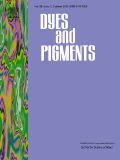
DYES AND PIGMENTS
Illuminating the Path of Chemical Material Sciences.Dyes and Pigments, published by Elsevier Science Ltd, stands as a pivotal journal in the field of chemical engineering, particularly focusing on the realms of dyes and pigments as materials with extensive application across industries. Since its inception in 1980, this journal has evolved to capture cutting-edge research until 2024, making significant contributions to both the Chemical Engineering and Process Chemistry and Technology domains, where it currently ranks in the Q2 category. With an impressive Scopus ranking placing it among the top 82nd percentile in General Chemical Engineering and the top 73rd percentile in Process Chemistry and Technology, it demonstrates a robust commitment to publishing high-quality, impactful research. Although it does not offer an open-access option, its comprehensive content remains accessible to a wide audience of researchers, professionals, and students who are deeply engaged in the study and development of new dye and pigment technologies. Engaging with this journal not only enriches knowledge but also facilitates critical discussions that drive future innovations in chemical material sciences.
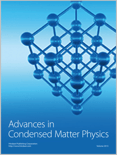
Advances in Condensed Matter Physics
Unveiling Innovations in Condensed Matter ResearchAdvances in Condensed Matter Physics is a distinguished journal published by HINDAWI LTD, dedicated to the rapid dissemination of high-quality research in the field of condensed matter physics. Since its inception in 2008, this Open Access journal has facilitated wide accessibility to cutting-edge findings and theoretical advancements, with aims to foster collaboration and innovation within the scientific community. With an ISSN of 1687-8108 and an E-ISSN of 1687-8124, the journal covers an extensive range of topics, from quantum materials to nanotechnology, ensuring relevance and engagement across various sub-disciplines. As a testament to its impact in the field, it is ranked in the Q3 category for 2023 within Scopus and holds a position in the 34th percentile for physics and astronomy. The journal's continuous commitment to publishing significant exploratory research until 2024 makes it a pivotal resource for researchers, professionals, and students eager to stay on the leading edge of condensed matter physics advancements.
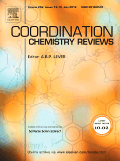
COORDINATION CHEMISTRY REVIEWS
Exploring the Frontiers of Coordination ChemistryCOORDINATION CHEMISTRY REVIEWS is a premier academic journal published by ELSEVIER SCIENCE SA, specializing in the interdisciplinary field of coordination chemistry. Established in 1966 and running until 2025, the journal boasts an impressive reputation, having achieved Q1 quartile rankings in categories such as Inorganic Chemistry, Materials Chemistry, and Physical and Theoretical Chemistry. It holds a remarkable position in Scopus rankings, being ranked #1 in both Physical and Theoretical Chemistry and Inorganic Chemistry, indicating its significance within the field. With a focus on comprehensive reviews that synthesize existing knowledge and propose future research directions, COORDINATION CHEMISTRY REVIEWS serves as an invaluable resource for researchers, professionals, and students eager to stay at the forefront of coordination chemistry advancements. Although not open access, the journal is accessible through various academic institutions and libraries, ensuring that cutting-edge research is available to those who seek it.

Sensors and Actuators Reports
Empowering Collaboration Through High-Quality FindingsSensors and Actuators Reports, published by Elsevier, is a premier open access journal that has been contributing to the fields of physics, computer science, and engineering since its establishment in 2019. With its ISSN 2666-0539, this journal has rapidly gained recognition, achieving Q1 quartile rankings across multiple categories, including Atomic and Molecular Physics, Computer Science, and Electrical Engineering. By providing a platform for high-quality research and innovative findings, Sensors and Actuators Reports is dedicated to advancing knowledge in sensor and actuator technologies, which are pivotal for numerous applications in modern science and industry. The journal's performance is underscored by its impressive Scopus rankings, placing it in the top tiers across various disciplines. Open access ensures that research is widely disseminated, fostering collaboration and enabling researchers, professionals, and students alike to engage with the latest advancements in their fields.
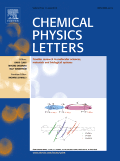
CHEMICAL PHYSICS LETTERS
Innovating Knowledge in Chemical Physics Since 1967CHEMICAL PHYSICS LETTERS, published by Elsevier, is a prestigious journal that has been at the forefront of advancing knowledge in the fields of physical and theoretical chemistry and physics since its inception in 1967. With an impressive impact factor reflective of its high-quality research output, this journal holds Q2 quartile rankings in both the Physical and Theoretical Chemistry and Physics and Astronomy categories for 2023. It is recognized as a key platform for disseminating groundbreaking findings, with Scopus rankings placing it within the top 76th and 66th percentiles in its respective categories. Researchers and professionals benefit from its insightful contributions and rigorous peer-review process, making it an essential resource for those engaged in cutting-edge chemical physics studies. Although the journal is not open access, it remains accessible through various institutional subscriptions, ensuring that a wide audience can explore its wealth of knowledge. Located in Amsterdam, Netherlands, the journal continues to drive innovation and collaboration across diverse scientific disciplines.